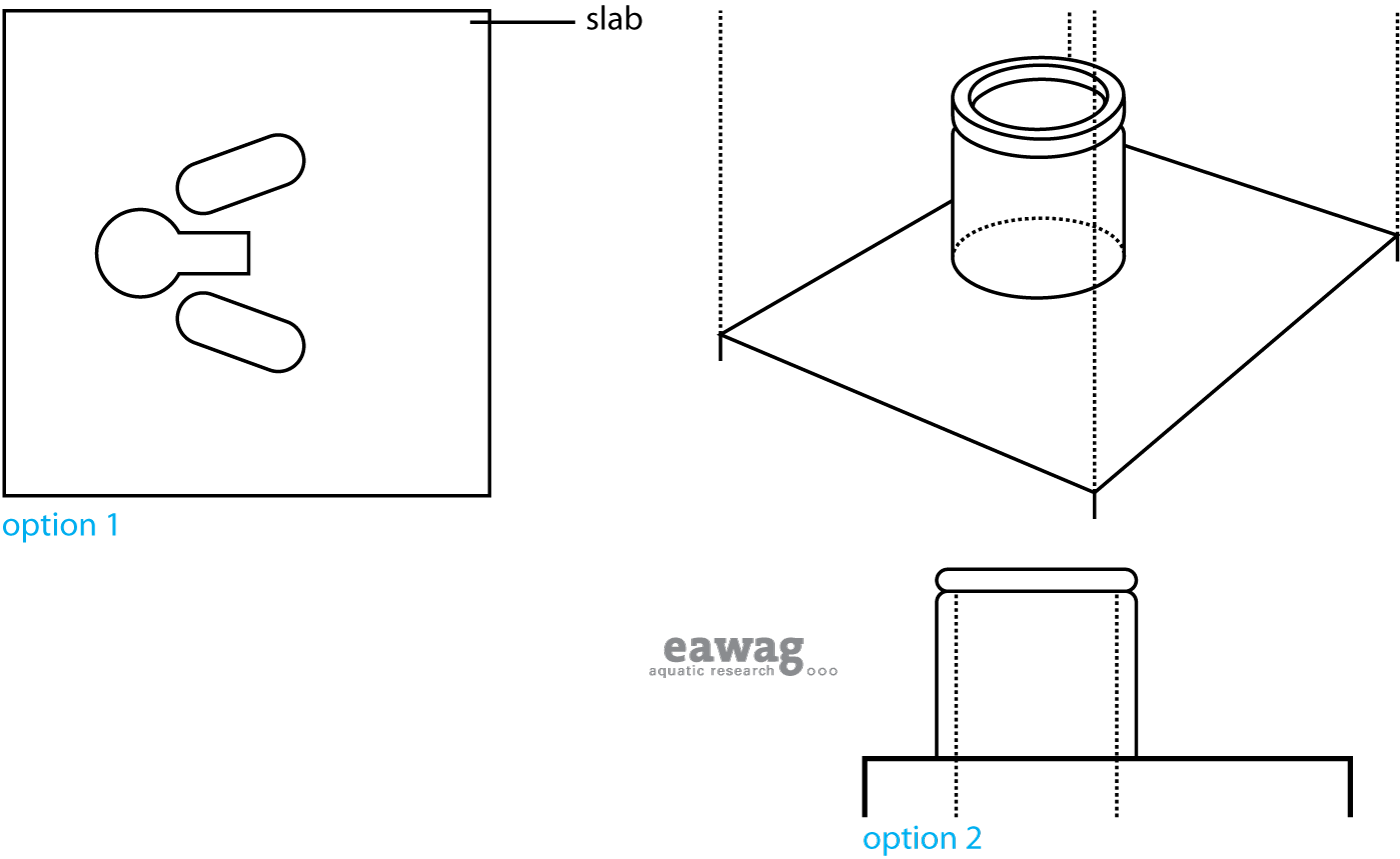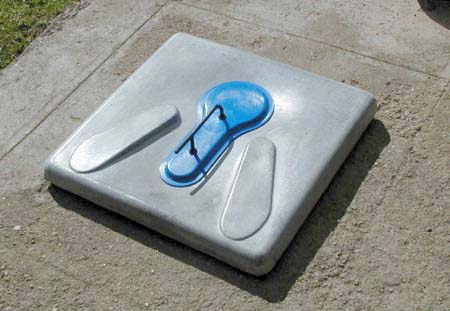Difference between revisions of "Dry Toilet"
(→References) |
|||
| (47 intermediate revisions by 4 users not shown) | |||
| Line 1: | Line 1: | ||
| − | < | + | {|style="float: left;" |
| − | {{ | + | |{{Language-box|english_link=Dry Toilet|french_link=Toilettes_sèches|spanish_link=Retrete_ Seco|hindi_link=coming soon|malayalam_link=coming soon|tamil_link=coming soon | korean_link=coming soon | chinese_link=Coming soon | indonesian_link=Coming soon | japanese_link=Coming soon}} |
| − | sys1=[[ | + | |} |
| − | sys2=[[ | + | <br> |
| + | <br> | ||
| + | {|width="100%" | ||
| + | |style="width:25%;"|{{santable_short_new| | ||
| + | sys1=[[Single Pit System|1]]| | ||
| + | sys2=[[Waterless Pit System without Sludge Production|2]]| | ||
sys3=| | sys3=| | ||
sys4=| | sys4=| | ||
| Line 9: | Line 14: | ||
sys7=| | sys7=| | ||
sys8=| | sys8=| | ||
| + | sys9=| | ||
pic=Dry_toilet1.png| | pic=Dry_toilet1.png| | ||
| − | Input1=Urine|Input2= |Input3=| Input4= |Input5=| | + | Input1=Urine|Input2=Faeces |Input3=Anal Cleansing Water| Input4=Dry Cleansing Materials |Input5=| |
| − | Output1= | + | Output1=Excreta| Output2=Anal Cleansing Water | Output3=Dry Cleansing Materials | Output4= | Output5=| |
| − | |||
| − | |||
| − | |||
}} | }} | ||
| − | [[Image:Icon_dry_toilet.png|right| | + | |[[Image:Dry_toilet1.png |right|500px]] |
| + | |} | ||
| + | <br> | ||
| + | ---- | ||
| + | <br> | ||
| + | |||
| + | [[Image:Icon_dry_toilet.png|right|80px]] | ||
'''A Dry Toilet is a toilet that operates without water. The Dry Toilet may be a raised pedestal that the user can sit on, or a squat pan that the user squats over. In both cases, excreta (both urine and faeces) fall through a drop hole.''' | '''A Dry Toilet is a toilet that operates without water. The Dry Toilet may be a raised pedestal that the user can sit on, or a squat pan that the user squats over. In both cases, excreta (both urine and faeces) fall through a drop hole.''' | ||
| − | + | In this compendium, a dry toilet refers specifically to the device over which the user sits or squats. In other literature, a dry toilet may refer to a variety of technologies, or combinations of technologies (especially pits). | |
| − | |||
| − | |||
| − | [[Image: | + | [[Image:dry_toilet.png|thumb|right|200px|Dry toilet, in Mexico]] |
| − | + | [[Image:slatsanc.jpg|thumb|right|200px|SanPlat-type dry toilet.]] | |
| − | The slab or pedestal base should be well sized to the pit so that it is both safe for the user and prevents stormwater from infiltrating the pit (which may cause it to overflow). | + | ===Design Considerations=== |
| + | The dry toilet is usually placed over a pit; if two pits are used, the pedestal or slab should be designed in such a way that it can be lifted and moved from one pit to another. The slab or pedestal base should be well sized to the pit so that it is both safe for the user and prevents stormwater from infiltrating the pit (which may cause it to overflow). The hole can be closed with a lid to prevent unwanted intrusion from insects or rodents. Pedestals and squatting slabs can be made locally with concrete (providing that sand and cement are available). Fibreglass, porcelain and stainless steel versions may also be available. Wooden or metal moulds can be used to produce several units quickly and efficiently. | ||
| − | |||
| − | |||
| − | |||
| − | |||
| + | {| border="1" cellpadding="5" cellspacing="0" align="none" | ||
| + | |- | ||
| + | ! width="50%" style="background:#efefef;" | Advantages | ||
| + | ! style="background:#f0f8ff;" | Disadvantages | ||
| + | |- | ||
| + | | valign="top" | | ||
| + | - Does not require a constant source of water.<br> | ||
| + | - Can be built and repaired with locally available materials.<br> | ||
| + | - Low capital and operating costs.<br> | ||
| + | - Suitable for all types of users (sitters, squatters, washers, wipers) | ||
| + | | valign="top" | | ||
| + | - Odours are normally noticeable (even if the vault or pit used to collect excreta is equipped with a vent pipe).<br> | ||
| + | - The excreta pile is visible, except where a deep pit is used. | ||
| + | - Vectors such as flies are hard to control unless fly traps and appropriate covers are used. | ||
| + | |} | ||
| − | |||
| − | |||
| − | + | ===Appropriateness=== | |
| + | Dry toilets are easy for almost everyone to use though special consideration may need to be made for elderly or disabled users who may have | ||
| + | difficulty. When dry toilets are made locally, they can be specially designed to meet the needs of the target users (e.g., smaller ones for children). Because there is no need to separate urine and faeces, they are often the simplest and physically most comfortable option. | ||
| − | ==Health Aspects / Acceptance== | + | ===Health Aspects/Acceptance=== |
| − | Squatting is a natural position for many people and so a well-kept squatting slab may be the most acceptable option. | + | Squatting is a natural position for many people and so a well-kept squatting slab may be the most acceptable option. Since dry toilets do not have a water seal, odours may be a problem depending on the Collection and Storage/Treatment technology connected to them. |
| − | + | ===Operation & Maintenance=== | |
| + | The sitting or standing surface should be kept clean and dry to prevent pathogen/ disease transmission and to limit odours. There are no mechanical parts; therefore, the dry toilet should not need repairs except in the event that it cracks. | ||
| − | == | + | === Manuals, videos, and links === |
| − | |||
| − | + | * [http://www.youtube.com/watch?v=GLJj8RB02NY Dry toilet] Demonstration of SanPlat system. | |
| − | |||
| − | |||
| − | * [ | + | * [https://sanplat.com/ SanPlat-type dry toilets]. |
| − | + | * [https://www.wsp.org/hwws-toolkit/hwws-tk-home Handwashing with Soap Toolkit] | |
| − | * [ | + | ===References=== |
| + | * Brandberg, B. (1997). [https://www.ircwash.org/resources/latrine-building-handbook-implementing-sanplat-system Latrine Building. A Handbook for Implementation of the Sanplat System]. Intermediate Technology Publications, London, UK. pp. 55-77. (Describes how to build a squatting slab and the moulds for the frame, footrests, spacers, etc.) | ||
| − | + | * CAWST (2011). [http://https://sswm.info/sites/default/files/reference_attachments/CAWST%202011%20Introduction%20to%20Low%20Cost%20Sanitation.pdf Introduction to Low Cost Sanitation. Latrine Construction. A CAWST Construction Manual.] Centre for Affordable Water and Sanitation Technologies (CAWST), Calgary, CA. (Very detailed construction manual for different slab designs)<br> | |
| − | |||
| − | + | * Morgan, P. R. (2007). [http://http://www.ecosanres.org/pdf_files/ToiletsThatMakeCompost.pdf Toilets That Make Compost. Low-Cost, Sanitary Toilets That Produce Valuable Compost for Crops in an African Context]. Stockholm Environment Institute, Stockholm, SE.] (Excellent description of how to make support rings and squatting slabs (pp. 7-35) and pedestals (pp. 39-43) using only sand, cement, plastic sheeting and wire)<br> | |
| − | * | ||
| − | * Morgan, P. ( | + | * Morgan, P. R. (2009). [http://http://www.ecosanres.org/pdf_files/EcologicalToilets-PeterMorgan-Mar2009.pdf Ecological Toilets. Start Simple and Upgrade from Arborloo to VIP]. Stockholm Environment Institute, Stockholm, SE.]<br> |
| − | * | + | * Reed, B. (2012). [https://wedc-knowledge.lboro.ac.uk/resources/booklets/G005-Latrine-slabs-online.pdf An Engineer’s Guide to Latrine Slabs]. WEDC, Loughborough University, Leicestershire, UK. (Comprehensive guide with key information and checklists for design, construction and maintenance)<br> |
| − | + | ===Acknowledgements=== | |
| + | {{:Acknowledgements Sanitation}} | ||
Latest revision as of 23:41, 4 September 2020
|
A Dry Toilet is a toilet that operates without water. The Dry Toilet may be a raised pedestal that the user can sit on, or a squat pan that the user squats over. In both cases, excreta (both urine and faeces) fall through a drop hole. In this compendium, a dry toilet refers specifically to the device over which the user sits or squats. In other literature, a dry toilet may refer to a variety of technologies, or combinations of technologies (especially pits). ContentsDesign ConsiderationsThe dry toilet is usually placed over a pit; if two pits are used, the pedestal or slab should be designed in such a way that it can be lifted and moved from one pit to another. The slab or pedestal base should be well sized to the pit so that it is both safe for the user and prevents stormwater from infiltrating the pit (which may cause it to overflow). The hole can be closed with a lid to prevent unwanted intrusion from insects or rodents. Pedestals and squatting slabs can be made locally with concrete (providing that sand and cement are available). Fibreglass, porcelain and stainless steel versions may also be available. Wooden or metal moulds can be used to produce several units quickly and efficiently.
AppropriatenessDry toilets are easy for almost everyone to use though special consideration may need to be made for elderly or disabled users who may have difficulty. When dry toilets are made locally, they can be specially designed to meet the needs of the target users (e.g., smaller ones for children). Because there is no need to separate urine and faeces, they are often the simplest and physically most comfortable option. Health Aspects/AcceptanceSquatting is a natural position for many people and so a well-kept squatting slab may be the most acceptable option. Since dry toilets do not have a water seal, odours may be a problem depending on the Collection and Storage/Treatment technology connected to them. Operation & MaintenanceThe sitting or standing surface should be kept clean and dry to prevent pathogen/ disease transmission and to limit odours. There are no mechanical parts; therefore, the dry toilet should not need repairs except in the event that it cracks. Manuals, videos, and links
References
AcknowledgementsThe material on this page was adapted from: Elizabeth Tilley, Lukas Ulrich, Christoph Lüthi, Philippe Reymond and Christian Zurbrügg (2014). Compendium of Sanitation Systems and Technologies, published by Sandec, the Department of Water and Sanitation in Developing Countries of Eawag, the Swiss Federal Institute of Aquatic Science and Technology, Dübendorf, Switzerland. The 2nd edition publication is available in English. French and Spanish are yet to come. |
|||||||||||||||




